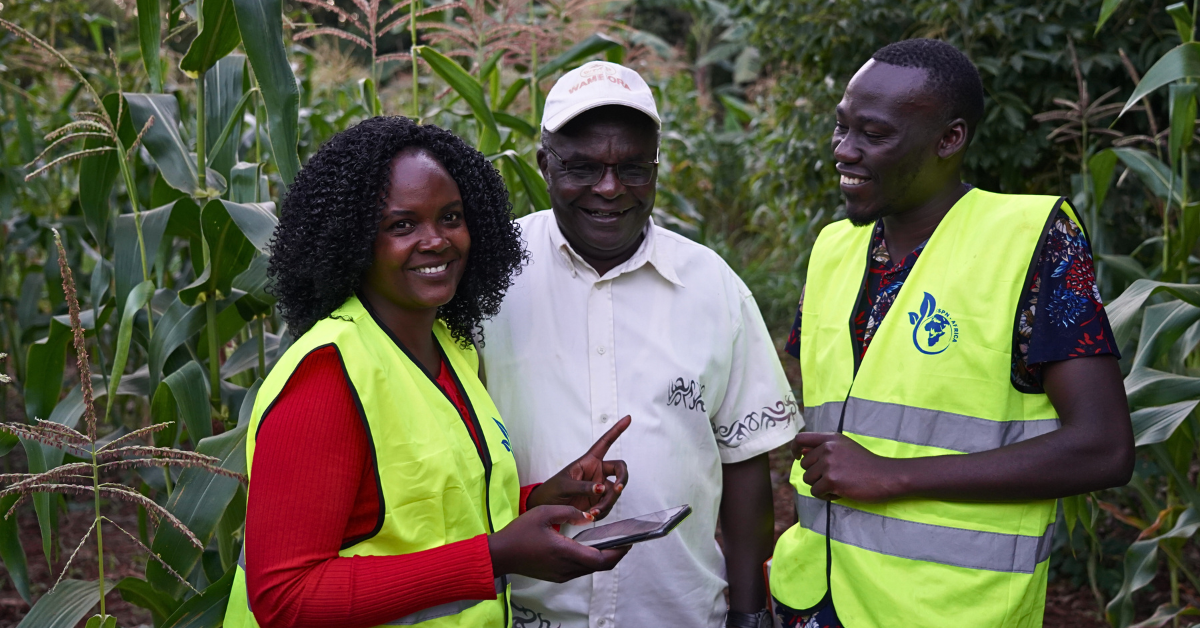
Synchronizing Digital Agriculture and Climate Change Mitigation
In recent years, digital agriculture has become an increasingly important tool for promoting food production and environmental care. Digital agriculture is definitively contemporary technologies to improve agricultural production, such as precision farming, remote sensing, and data analytics. By leveraging these technologies, farmers can increase their yields, reduce their environmental impact, and improve their overall efficiency.
Whereas change is inevitable and the best way to realize a renaissance, we cannot emphasize more than enough that the role of digital agriculture has been deployed over the years to promote food production and environmental restoration and strive to create a more sustainable and productive agricultural system. Some processes have been made seamless and resource-viable methodologies as compared to the old days.
Imagine irrigating an acre farm on the slopes of Meru or Kisii with a watering can? It is cumbersome and unreliable. Using GIS technology, a farmer can learn the terrain of their area and develop an irrigation system that takes advantage of gravity to allow water flow. Solar-driven water pumps can pump water uphill and it is zero emitor.
Technologies offer a number of benefits and challenges as they bulldoze ways to better the lives of many in agriculture and food supply chains. The dependence on seasons is becoming less because farming is done in the off-season and innovations are improving the storage of food in both mobile and immobile storage facilities.
The adoption of many technologies is still segmented because information coverage is disaggregated despite being touted as game-changers. Yes, there are noticeable footsteps as the technology itself through media is making sure information is decentralized to all implementers at the grassroots level.
How is digital agriculture synchronizing food production and climate mitigation?
Efficient Resource Management: Digital technologies, such as sensors, Internet of Things (IoT) devices, and data analytics, enable farmers to monitor and manage resources more efficiently. They can collect real-time data on soil moisture, nutrient levels, and weather conditions, allowing for precise irrigation and fertilizer application. This optimization minimizes resource wastage(Especially chemical use), reduces environmental pollution, and improves resource use efficiency.
Climate Resilience: Farmers adapt to climate change by accessing climate data and predictive models. By leveraging this information, farmers can make informed decisions on planting schedules, crop selection, and water management. Digital tools also facilitate early warning systems for extreme weather events, enabling farmers to take preventive measures while minimizing vulnerability to climate-related risks.
Precision Farming: precision farming techniques such as variable rate application and site-specific management have reduced trial and error and spontaneous agriculture. By analyzing data on soil fertility, crop health, and yield potential, farmers can tailor inputs, such as seeds, fertilizers, and pesticides, to specific areas within their fields. This targeted approach reduces chemical usage, minimizes environmental contamination, and optimizes crop yields.
Pest and Disease Management: farmers can now respond promptly and implement targeted interventions, reducing the need for blanket pesticide applications. How is this even possible? Remote sensing and artificial intelligence, are proving possibilities and convenient in the early detection and monitoring of pests and diseases. This allows adopting integrated pest management strategies, and ecological balance and reduces harm to beneficial organisms.
Sustainable Farming Practices. Access to best practices, training modules, and expert advice on soil conservation, water management, agroforestry, and biodiversity preservation has been made less strenuous. These resources empower farmers to adopt environmentally-friendly methods that minimize soil erosion, preserve natural habitats, and enhance ecosystem services. In Kenya, we can observe that people are embracing urban farming where they are using old tires and used bottle plastics to grow vegetables as initiatives to enhance food safety and nutrition security and keep the environment clean.
Supply Chain Optimization: Digital tools enhance transparency and traceability throughout the food supply chain. Blockchain technology is one instance that takes deep roots, with immutable record-keeping to ensure the integrity of food production and distribution processes. This transparency allows consumers to make informed choices about their food, promoting a more sustainable and responsible food system.
The revolutionary Shamba Calendar app is also enabling the consumers, food suppliers, and food industries to know what and how much is produced where. Having this predictive mechanism can enable balance in the supply chain by diffusion mechanism to areas where production has been challenged by natural calamities or where demand is high.
By leveraging digital technologies, data analytics, and knowledge sharing, digital agriculture enables farmers to produce food more efficiently and sustainably. It helps conserve natural resources, minimize environmental impacts, and foster resilience in the face of climate change. Ultimately, digital agriculture contributes to the goal of ensuring food security while safeguarding the health and integrity of our environment.
Also read: It Takes a Digital Village to Improve Smallholders’ Productivity and Resilience.
Note: The content in the article is subject Author's thoughts.
